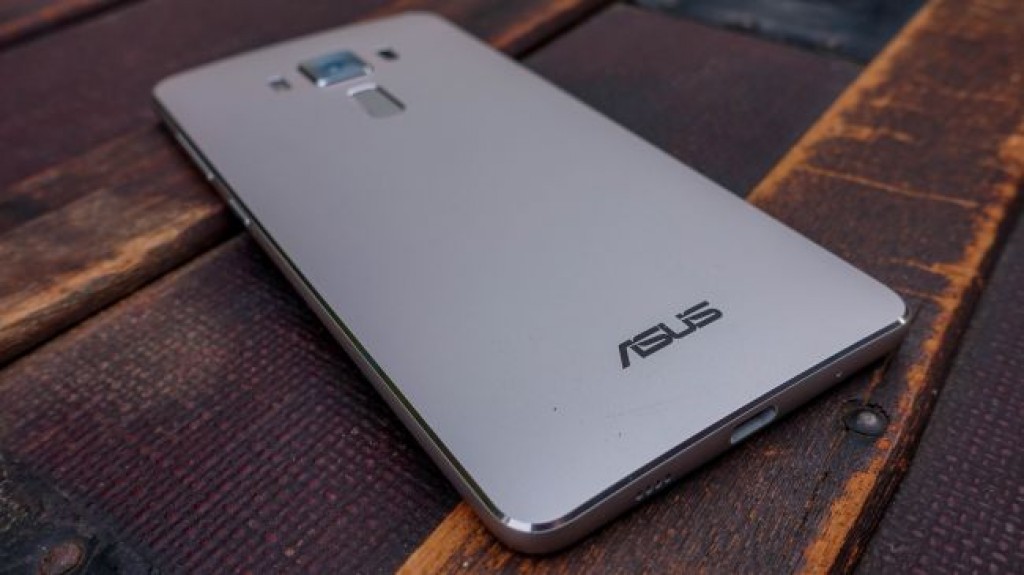
OUR VERDICT
Asus Zenfone 3 Deluxe is a much better Android phone than its predecessor thanks to its full metal body design and industry-leading specs. It’ll take more testing to see if the 6GB of RAM and new 23MP camera truly amount to a better phone.
FOR
- 6GB of RAM onboard
- Slick antenna-less metal design
- Starts at 64GB of storage
AGAINST
- Hidden cost: Snapdragon 821 version
- 1080p display unfit for VR
- Single, bottom-firing speaker
Zenfone 3 Deluxe represents a major upgrade to Asus’ spelling-challenged smartphone series with a component design and specs you won’t find on many other Android phones today.
The smartphone is made a name for itself at Computex 2016 with 6GB of RAM. All but one (the OnePlus 3T) of our best phones ended 2016 with 4GB of RAM, which prevents slowdown with multiple apps open.
This phone also debuted the Snapdragon 821 chipset worldwide (though the Google Pixel and Pixel XL came out first in the West) and starts with 64GB of internal storage (going up to 256GB).
Of course, there’s also a more reasonably priced Snapdragon 820 version – the one we tested – but you wouldn’t know that from Asus’s 821-touting product page. The 820 is in fine print.
The Zenfone 3 Deluxe camera puts big numbers on the specs sheet, too, with a 23MP sensor, and so does the 5.7-inch display and it dual SIM/microSD card unlocked phoned capabilities.
But do these specs compute into anything meaningful, and does the fact that it runs Android 6.0 Marshmallow instead of Android 7.0 Nougat matter? Let’s explore this ‘fone.’
Asus Zenfone 3 Deluxe price
- It costs $499 in the US, strictly on GSM carriers like AT&T and T-Mobile
- It’s an unlocked phone, but not compatible with Verizon or Sprint
- It won’t come to the US or Australia, according to Asus
- Be careful: there’s a cheaper, but smaller/slower version under the same name
The Asus Zenfone 3 Deluxe price isn’t very straightforward because there are so many versions in the phone series: Zenfone 3, Zenfone 3 Deluxe, Zenfone 3 Max, Zenfone 3 Laser and even a 6.8-inch Zenfone 3 Ultra. It’ll soon be joined by an Asus Zenfone 3 Zoom.
It costs $499 for the Zenfone 3 Deluxe with a 5.7-inch display and Snapdragon 820 chip in the US. The ZTE Axon 7 and OnePlus 3T are cheaper, but Asus’s phone has a bigger screen and longer battery life.
You’ll have to pay $799 for the Asus Zenfone 3 Deluxe Special Edition to get the faster Snapdragon 821 chip, and there’s also a $369 “deal” for a Zenfone 3 Deluxe – but buyer beware, it has a 5.5-inch screen and slower Snapdragon 625 chip.
The Asus Zenfone 3 Deluxe hasn’t launched in the UK, but with direct conversion at about £403, it’ll likely cost you between £450 and £499 if it does. In Australia, it works out to about AU$659.
Design
- Full-metal unibody upgrade ditches its Asus’s cheap plastic origins
- Invisible antenna lines make for a smooth matte finish all around
- Comes in three colors: Titanium Gray, Glacier Silver and Sand Gold
The Asus Zenfone 3 Deluxe is being touted as the world’s first full-metal unibody phone with an invisible antenna design, and that’s technically true.

Apple’s aluminum iPhone 7 still has antenna lines, and while LG G5 makes them invisible, it has a gap for modular add-ons; it isn’t really unibody. Samsung Galaxy S7 Edge is made of glass.
That leaves the Zenfone 3 Deluxe to steal some thunder with a sleek look of its own. The matte gold version we’ve been testing does just that with a seamless, sometimes slippery back.
What’s most striking about this metal phone that it’s a vast improvement over the Asus Zenfone 2. It does away with the cheap plastic that made Zenfone 2’s design downright unlikable.
As much as we dug this predecessor’s specs and the software customizations, it felt shoddy. Like, not even good plastic. This new Zenfone 3 Deluxe design rights that wrong.
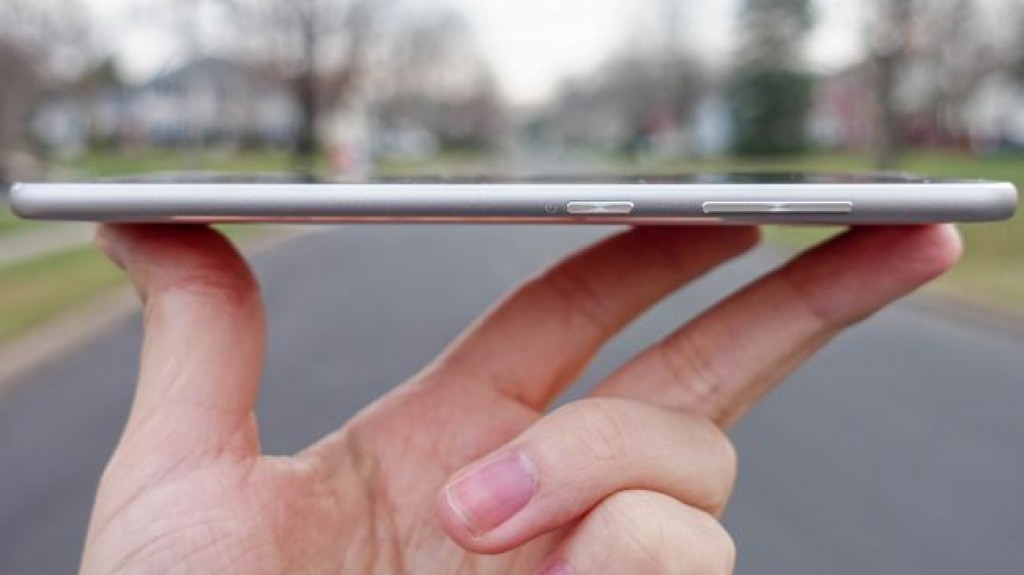
The Zenfone 3 Deluxe measures 156.4 x 77.4 x 7.5 mm, which doesn’t make it as thin as the ultra-thin Nexus 6P (7.3mm thin), but it’s close and, when testing it, this phone felt better than the thicker, non-Deluxe Zenfone 3 (7.7mm thin) that’s never coming to the West.
The power button and volume rocker are now on the right side (instead on of the back), while an oddly shaped rectangular fingerprint sensor pad remains on back. You don’t actually press it in.
Capacitive soft buttons line the phone’s bottom face, with home, back and recent. It goes against the trend of using purely on-screen buttons or including a physical home button on front.
On-screen buttons have become popular for expanding minimizing bezels, but these buttons are at least always at the ready and never vanish at the worst possible moment.
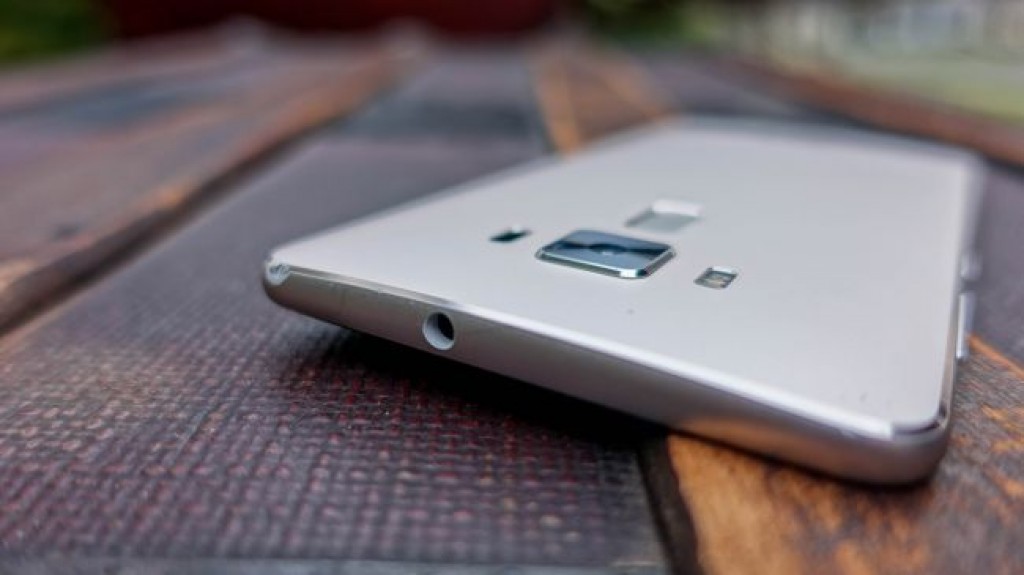
We had a big problem with Zenfone 2’s top-mounted power button, which we described as “squishy.” We’re happy to report that the Zenfone 3 Deluxe’s new power button fixes this issue.
Its side-mounted power button and volume rocker feel a bit shallow, but they’re at least clicky. This is all the more important than ever because the Deluxe camera can be launched by hitting the volume down button twice when the phone is asleep.
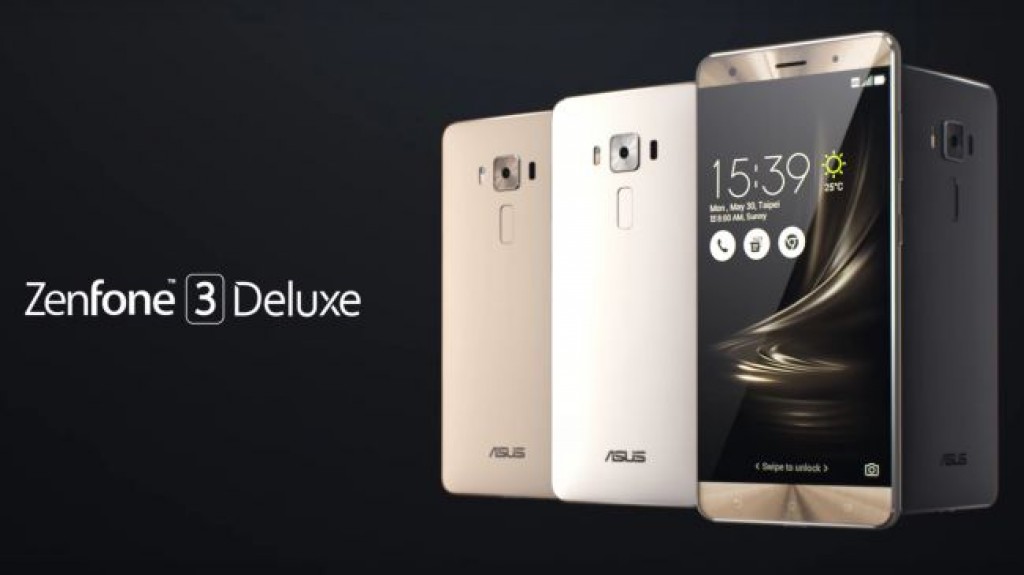
Like a lot of phones these days, it pivots to USB Type-C, sticks with one speaker (but of course promises stellar audio, according to the company’s best marketing efforts) and comes in three colors: Titanium Gray, Glacier Silver and Sand Gold. We could only find the gold color readily in stock in the US.
Screen
- Full HD display still looks superb even with fewer pixels than rivals
- Great screen-to-body ratio gives you a bigger screen than iPhone 7 Plus
- Just don’t expect it to ever handle pixel-demanding VR
Asus Zenfone 3 Deluxe has a spacious 5.7-inch screen, and fills the large void of the recalled Samsung Galaxy Note 7. It’s just missing that all-important embedded stylus, which is a long way off if you’re waiting for the Samsung Galaxy Note 8.

There’s very little bezel on the sides and more screen space to work with thanks to the fact that the Super AMOLED display takes on a respectable 79% screen-to-body ratio.
The capacitive buttons do eat into significant screen space, but the display is still bigger than the iPhone 7 Plus, even though it has the roughly the same exact overall phone dimensions.
You won’t find any extra pixels on this 1080p display, as it skips the Quad HD trend powering its Android rivals. The souped-up version’s Snapdragon 821 chip supports 4K displays, but this one is far from that spec.
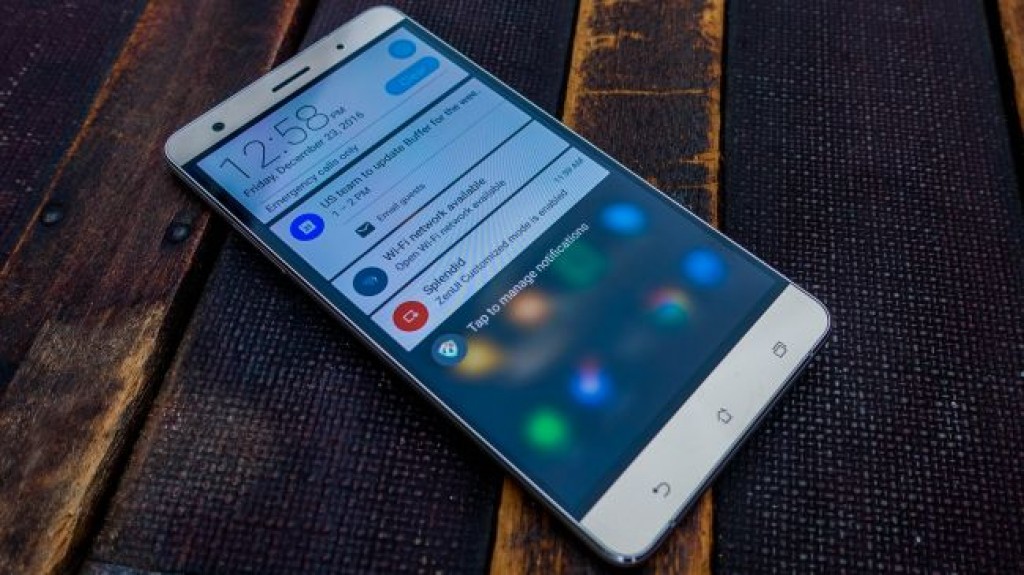
Instead, the Zenfone 3 Deluxe has a much brighter Full HD display compared to what we experienced with the Zenfone 2. A bright display is far more important than additional pixels.
Taking the Zenfone 2 outside to snap photos was a headache due to its dull screen; we couldn’t see what we were shooting and just hoping the photos turned out okay (they didn’t, the Zenfone 2 camera was also mediocre).
We’re okay with Full HD 1080p displays on phones of this size, but the company’s working on an Asus VR headset. As we experienced with the Huawei VR headset, 1080p is problematic when the screen is sitting two inches from your face. Outside of that, this display looks great.
Specs and performance
- 6GB of RAM keeps more than 30 apps open without slowdown
- Power & Boost app quickly shuts down memory-eating apps
- A few cheaper Android rivals that prove to be faster in our tests
The Asus Zenfone 3 Deluxe specs, not the display, are what really pop. Its performance nearly matches the Google Pixel and Pixel XL, even though Asus runs the older Snapdragon 820 chip.
Its 6GB of RAM gives you more breathing room to open apps and multitask without lag. Even with the weighty Asus-themed Android 6.0 Marshmallow operating system, it’s quick all around.
The software makes it obvious that it’s is geared to powers users. They’ll go OCD on the Power & Boost app that’s right on the home screen and instantly frees up memory to really juice up this phone’s performance.
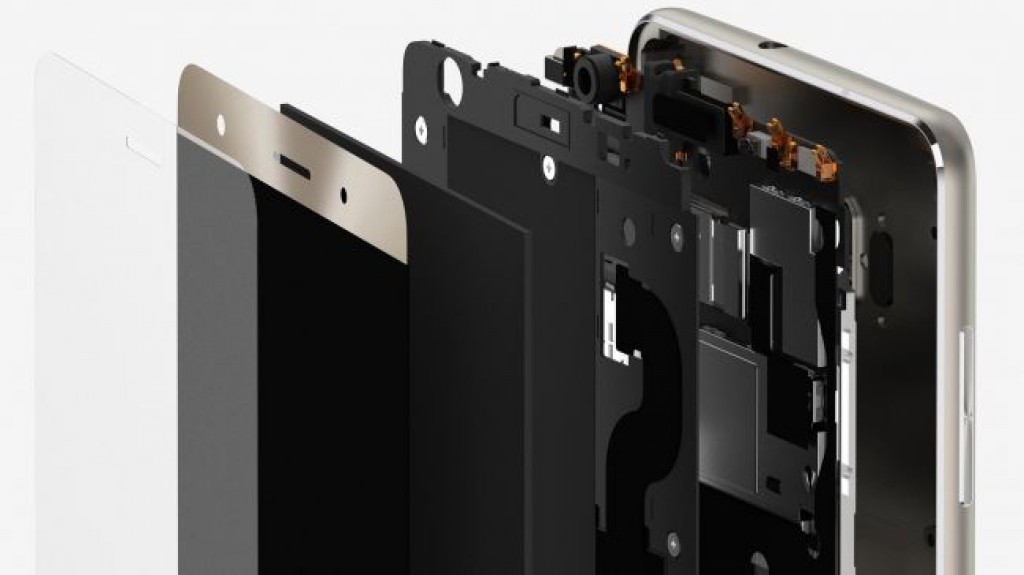
That said, there’s little reason to need 6GB of RAM on a phone right now. We also found that a few phones with 4GB of RAM beat the Zenfone 3 Deluxe in our benchmarking tests.
Zenfone 3 Deluxe was so close to breaking the 4,000 score ceiling when we tested its four-core processor through the Geekbench 4 benchmarking app, averaging a 3,946 multi-core score.
The Snapdragon 821 version does more than that with 5,000-plus multi-core scores. It beats the power Samsung Galaxy S7 Edge (non-US Exynos edition) in raw tests.
Fitting in between these two scores are the OnePlus 3 (3,898), Google Pixel (4,030), OnePlus 3T (4,313), Samsung Galaxy S7 US edition (4,635), Honor 8 (5,207) and ZTE Axon 7 (5,393).
What’s surprising is that cheaper phones like the ZTE Axon 7 and Honor 8 are able to beat the Zenfone 3 Deluxe in our tests. The good news is that this handset feels snappy enough outside of Asus’s sometimes overbearing interface.
Apps and interface
- Asus once again fills its phone with loads of customizations
- It has too many useless apps and an awful default keyboard
- Launches with Android 6.0 Marshmallow, not Android 7.0 Nougat
That may not matter to you because Google’s mobile operating system has been reshaped by the minds at Asus, giving power-hungry users access to all sorts of new apps and menus.
The interface can be overbearing, as good as the intentions. In addition to the Power & Power app to clear memory right from the home screen, we dig the customization options.
Asus has consistently put Android customizations at your thumb tips, so you can tinker with the home screen without rooting or diving too deeply into the system settings.
This is more than updating the wallpaper and adding widgets. You can get down to editing icon sizes and their alignment, altering scroll effects and changing font sizes. It can look messy if you’re not up to spending a little of timing learning the software’s many ins and outs.
The Zenfone 3 Deluxe is choke full of unnecessary apps, too: Do It Later, FM Radio, Laser Ruler, MiniMovie, PhotoCollage, QuickMemo, Share Link and Splendid to name a few.
That’s not the entire default app roster either. Some are moderately helpful: AudioWizard, File Manager, Mobile Manager, ZenCricle, ZenFone Care, ZenTalk and MyAsus Service Center.
Some are doubles of Google apps you probably already have: Calculator, Clock, Contacts, Sound Recorder, Weather, Flashlight and Backup. It spans three pages in the app drawer.
While most of these can be uninstalled, until you do that, they’ll all want to update periodically and that really taxes both your phone’s resources and cellular bandwidth.
Here’s another way Asus wants to be too helpful for its own good: the Zenfone 3 Deluxe has what may be the world’s worst default Android keyboard.
The keyboard is cramped with so many options that it ends up with ridiculously small keys. If you don’t immediately switch to the way-better Google keyboard, you probably work for Asus and deserve the employee of the month award – every month.
Call quality and reliability
Zenfone 3 Deluxe is an overachiever when it comes to Android tweaks and camera modes, but it misses out on too many simple tasks, like making clear phone calls.
The earpiece is really to blame, as the speakerphone improved call quality a little bit on our end. But switching the same SIM card to other phones always allowed us to hear our callers better.
You should also know ahead of time that the Zenfone 3 Deluxe uses a micro SIM card, which is a larger SIM than the nano SIM card used by almost every other Android phone these days. We had to get a SIM card adapter on Amazon to make it work.
The other reliability concern we ran into had to do with the fingerprint sensor. The oddly shaped rectangular pad only recognized us quickly when our fingers stuck the landing. It’s too small and narrow to be consistent and it lead to a bunch of frustrating rejections.
Movies, Music and Games
- Big, bright display makes casual movie-watching feasible on a phone
- Advanced audio’s usefulness is limited from a mono speaker
- Headphone jack is here – albeit at the top of the phone
The expansive 5.7-inch Zenfone 3 Deluxe screen makes watching movies and playing games a worthwhile experience on a phone. The Super AMOLED display really shines – in the right way.
Unlike the duller Zenfone 2 screen with Gorilla Glass 3, Asus upgraded its phone with a brighter panel and Gorilla Glass 4, making way for easier to view in all sorts of environments and angles.
When it comes to listening to music and other multimedia, the Zenfone 3 has Hi-Fi audio and the speaker gets plenty loud. That doesn’t help the fact that it still uses a mono speaker.
There’s a lot of high-end audio tech behind the phone, with Asus touting a five-magnet speaker and the 192kHz/24-bit standard that’s supposed to be four times better than CD quality.
It sounds good at all but the highest levels, at which not even high-resolution audio can save some TV shows and movies when it tends to also amplify background noise and distortion.
Bonus points for including a headphone jack, but not as much as it could have had – the jack is at the top of the phone. That makes is inconvenient when watching something on the screen and a wire is dangling in the way.
Camera
- 23MP sensor takes okay outdoor photos in proper light
- Slow and filled with noise in anything that resembles lowlight
- Over 20 different camera modes and a good selfie snapper
Asus paid more attention to the Zenfone 3 Deluxe camera, and it cranks up the megapixels with a 23MP Sony IMX318 sensor it dubs “PixelMaster 3.0.” Sounds more like a really bad 90s AOL Instant Messenger screen name for a pompous camera guru.
That translates to a f/2.0 lens that’s supposed to take 0.03 seconds to autofocus. There’s optical image stabilization onboard for shaky hands and a dual tone LED flash for night shots.
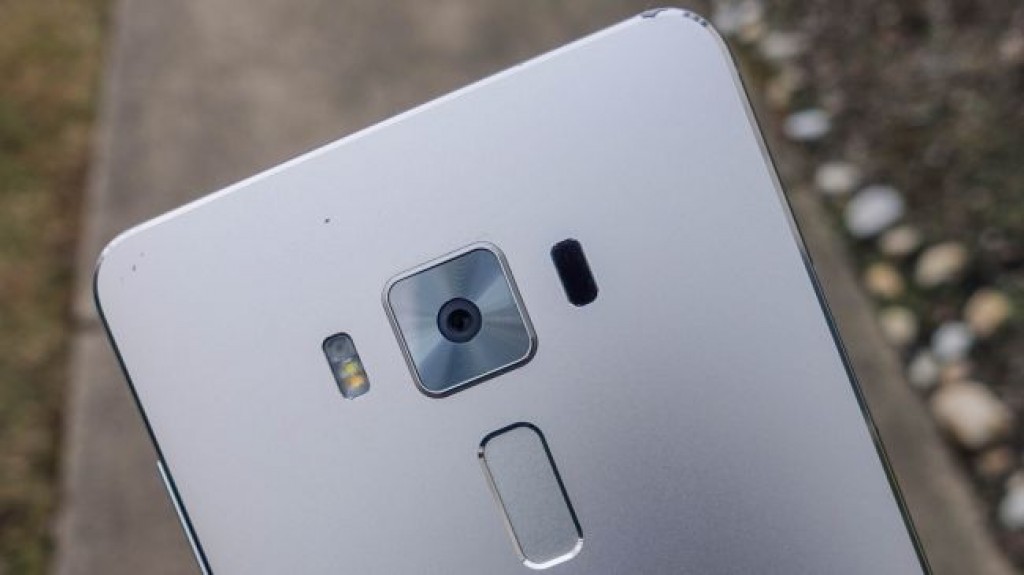
Don’t let the high megapixel count fool you. The Samsung Galaxy S7 and Galaxy S7 Edge cameras is still the best in the biz right now and it’s only 12MP. It’s all about the quality of the sensor and post-processing, especially when it comes to low-light photos.
In fact, though the Zenfone 3 Deluxe nearly doubles Samsung’s megapixels, it’s not even close to being on par to the Galaxy S7 camera.
Outdoor photos in ample sunlight are good enough and, based on that alone, we would have recommended this as a reliable Android camera. But it turns into something of a smartphone werewolf after sunset and indoors without proper light.

Photos in any sort of shade exhibit too much shadow and everything lacks detail. That’s a big problem when high-end phones take better photos and cheap Android phones do too.
Even with laser, phase detection and continuous auto-focus employed, the camera is too slow to take photos in lowlight, and that’s a big headache. And you can forget about capturing moving subjects. They’re already gone or moving streaks in low-light.
To its credit, Asus’s camera is bursting with modes, including a comprehensive manual mode with controls for adjusting the focus, white balance, shutter speed and ISO.
Almost all of the other modes try to compensate for fidgety people with good ideas: All Smiles, Children, and Time Rewind are a mix of facial detection and picking the best burst photo.
Our favorite part is that the kid-face-detecting Children mode includes sound includes trumpet and animal noise sound effects to get kids to look at the camera. It’s odd, but effective.
There are actually 20 camera modes in total, including HDR Pro, Beautification, Depth of Field, Super Resolution and GIF Animation. These would be helpful is the camera always worked well.
Zenfone 3 Deluxe can shoot 4K video at 30fps and it’s steady enough (but not as good as the Google Pixel XL) by mixing optical image stabilization (OIS) and software-driven electronic image stabilization (EIS). Time lapse and slow motion are here at low resolutions.
The front-facing camera is 8MP and it takes better-than-average selfie photos. Just be sure to turn off the alien-looking beauty mode that’s enabled by default to get a more realistic shot.
Battery life
- Lasts longer than other phones with a 3,000mAh battery
- Owes much of its longevity to a lower-res screen and software
- Awfully named ‘BootMaster Fast Charging’ charges it rather quickly
The all-day-plus battery life also withstood our lab tests, in which we played a looped 90 minute HD video at full charge. It ended up draining just 13%, on par with the Samsung Galaxy S7.
The Asus Zenfone 3 Deluxe battery has two things going for it: its low-resolution screen and its (sometimes too) aggressive battery-saving tweaks when you’re down to your last precious 10%.
There’s a positive trade-off for having your phone fire up fewer pixels in a 1080p display, and the Zenfone 3 Deluxe Super AMOLED screen looks just fine; small pixel loss, huge battery gain.
With Qualcomm’s Snapdragon 820 onboard, the battery benefits from Quick Charge 3.0, which means it can quickly fill back up rather quickly with a compatible charger.
There’s a fast charger included and we got the same numbers using a Samsung Galaxy Note 7 charger (hey, it’s not ever using it again) that turned out to be just as compatible: 20% in 15 minutes, 47% in 30 minutes and 70% in 45 minutes. It took 89 minutes to reach 100%.
Perhaps the only thing we can’t get behind about the battery and charging is the silly name for Asus’s charging standard: ‘BootMaster’ Fast Charging. Every manufacturer has their own name for it (even if they’re based on the same tech) and it sounds like another bad screen name from yesteryear.
The Asus Zenfone 3 Deluxe is the grown up version of the cheap-feeling Zenfone 2 phone we reviewed and actually broke during testing more than a year ago. No one mourned its loss.
Asus is ready to play with the adults at the best Android phones table, which is occupied by the likes of Samsung, LG, HTC and newcomers like ZTE. It fits right in, with some reservations.
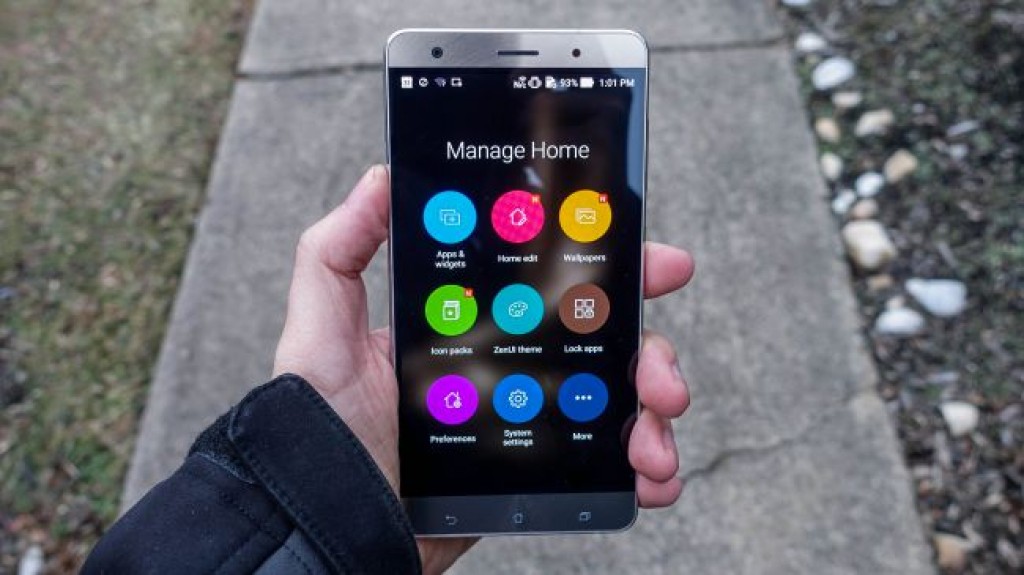
Why should I buy the Asus Zenfone 3 Deluxe?
It’s a complete turnaround on the design, with an antenna-less full metal unibody, better feeling buttons and good bezel to screen ratio. The 5.7-inch AMOLED display is spacious and bright.
You’re going to like the phone’s outside looks and, as long as you can wrap your head around complex menus, its customizable options that let you tinker with the Android settings. The fact that it has 6GB of RAM means you can have over 30 apps open without slowdown.
Best of all, this phone lasts a long time. There’s solid battery life to the Zenfone 3 Deluxe thanks to its lower-resolution Full HD display and a bunch of aggressive battery saving techniques. It’s all about looks and longevity at a decent price.
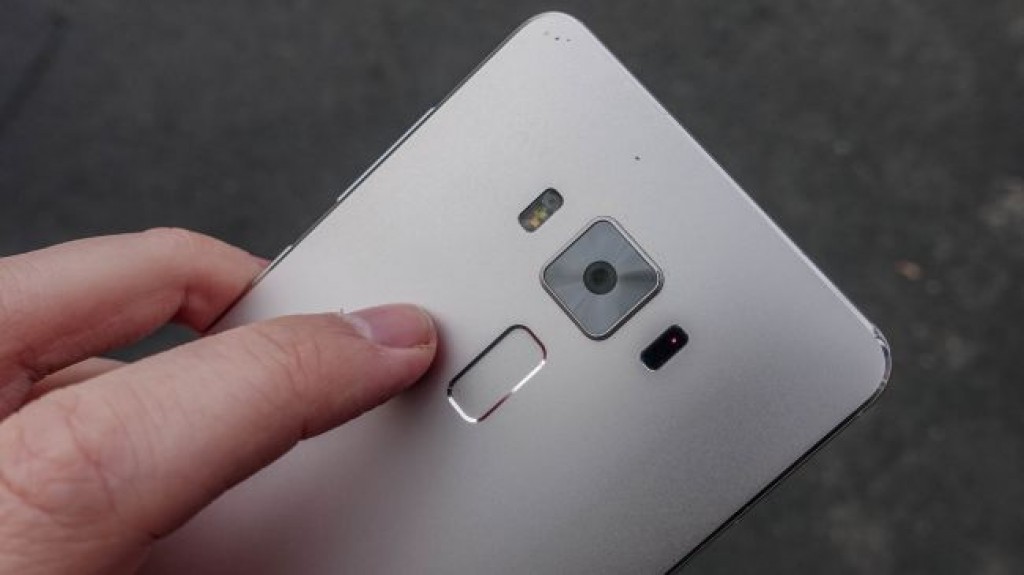
Why shouldn’t I buy the Asus Zenfone 3 Deluxe?
This isn’t the big phone for everyone’s big hands, even at its lower price point. It’s software can be downright intimidating with so many options in the UI, it doesn’t have the best camera and its call quality isn’t always perfect, either. So much for those invisible antenna lines, right?
It also doesn’t have the faster Snapdragon 821 chipset, as much as Asus’s product page talks it up, unless of course you opt for that “special edition” that costs almost twice as much money. Make sure you read the fine print before buying your Zenfone 3 Deluxe.
The fact that rival Android phones like the ZTE Axon 7 snap better photos and includes dual stereo speakers at a cheaper price means you have other options you should consider – at least until the Asus Zenfone 3 Zoom rights this camera’s wrongs.
Competition
ZTE Axon 7
The ZTE Axon 7 is a better phone for a cheaper price thanks to its superior camera, stereo dual front-facing speakers, bigger fingerprint sensor pad and VR-ready Quad HD display with Google Daydream View support. It’s also on its way to being updated to Android 7.0 Nougat and accepts nano SIM cards with good call quality to boot. What it doesn’t have it better battery life or a 5.7-inch display.
Huawei Mate 9
Huawei has you covered if you’re keen on a bigger display thanks to a 5.9-inch Full HD screen, and it’s has one of the most powerful smartphones right now. It does cost more money than the Asus Zenfone 3 Deluxe because of those extra tenths of an inch of screen space and its faster chipset. No matter how much you spend, you’re not getting an app drawer from this Chinese phone, which is a deal breaker for some Android users.
Asus Zenfone 3 Zoom
The camera-focused Asus Zenfone 3 Zoom isn’t out yet, but it’s the company’s next variant in this always-evolving smartphone series. It’s supposed to deliver the superior photos you can’t get from the Zenfone 3 Deluxe, while dialing back the processing power and screen size to a 5.5-inch display. It scales back to 4GB of RAM, too, but uses all of the extra space for a 5,000mAh battery. That’s massive and may be worth the wait.
Sourse: techradar.com

